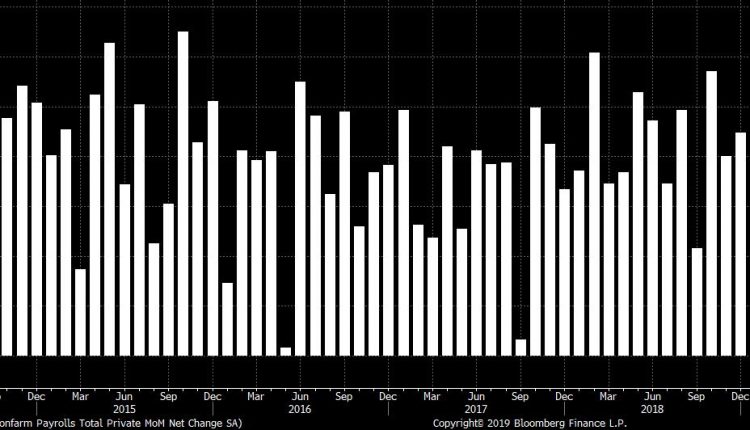The first Friday of November will see the U.S. nonfarm payrolls report coming out amid a busy trading day.
Following the surprise decline in the unemployment rate for the United States, the forecasts are somewhat more realistic this time around.
The U.S. unemployment rate is forecast to rise from 3.5% to 3.6%. Despite the expectation for an increase, it still remains near historic lows.
Wage growth, which is more closely watched, is forecast to show an increase from 2.9% in September to 3.0% in October. The increase in wage growth will be somewhat good news for investors. Still, on a yearly basis, the US wage growth has been stuck near the 3.0% range.
The wage growth for September was one of the lowest increases since July 2018
But, with inflation staying sluggish, an increase, even if it is a modest increase in wage growth, is a welcome change.

US Nonfarm payrolls, October 2019
Lastly, the October NFP is forecast to show 105k jobs during the month of October.
This is somewhat of a low expectation as that the economy added 135k jobs in the month before. The pace of jobs over the past few months is decreasing. However, it hasn’t triggered any alarm bells yet.
Investors are taking comfort from the view that with the Fed lowering rates, it would help to revive the economy. But having said that, given the long expansionary stretch, it would be inevitable to expect to see a slowdown in the world’s largest economy.
This was also quite clear from the GDP numbers which have been slowing consistently.
Busy Friday Will See Release of ISM Manufacturing PMI
The Institute for Supply Management’s (ISM) manufacturing PMI is also due to come out on Friday. Therefore, it is unlikely to get a fair idea on the estimates. The US manufacturing sector has been in a decline over the past few months.
This is consistent with the slower pace of job growth during the period.
However, with the Federal Reserve cutting rates, it is likely to act as a positive for the jobs market. But this could take time for the economy to grow and thus reflect with an increased pace of hiring.
The central bank has also acknowledged that the US economy is in one of the late stages of economic growth. Thus, it is not surprising to see some kind of weakness in the labor market as well.
However, economists are baffled by the fact that despite a slowdown, the unemployment rate is significantly lower. At 3.5% in September, the unemployment rate hit a new historic low.
But having said that, the nonfarm payrolls have been somewhat resilient. In September, there were revisions to the payroll data for the previous months. In the previous two months, the revisions saw the net gain jobs rising 45,000.
The data has no doubt remained mixed.
Investors will likely shrug aside any disappointment in the markets for October. This comes as the Fed is now moving towards keeping a dovish bias on monetary policy. Despite starting the year off without interest rate cuts, the Fed has lowered rates over the course of the year.
The Federal Reserve initially started out by cutting rates and noting that it was only a mid-cycle adjustment. However, with the economic outlook turning weaker, the scope for the central bank to support a slowing economy with further rate cuts seems likely.
For the moment, the US unemployment rate remains one of the key fundamentals that has been working in favor of the Fed. But a decline in this aspect could spark real concerns.
